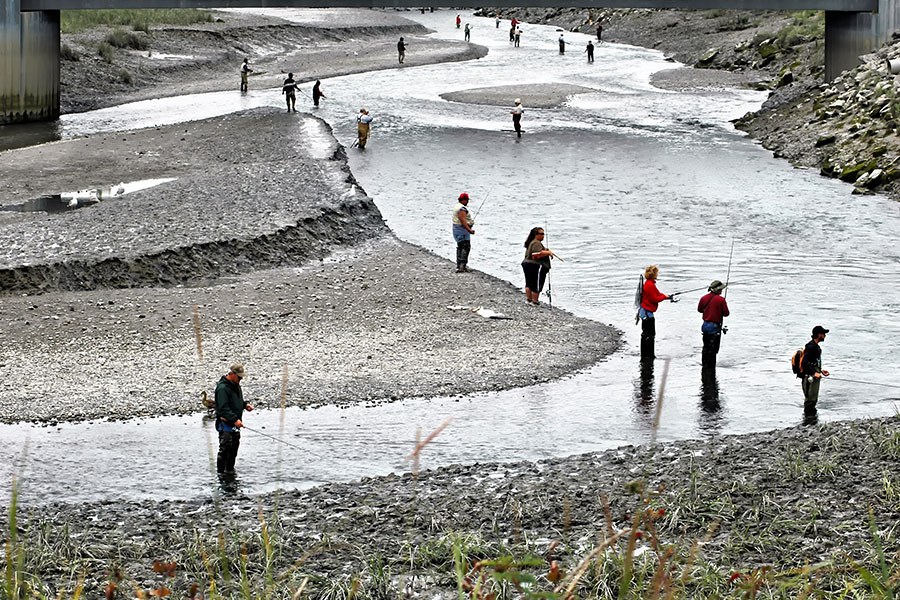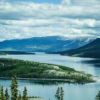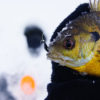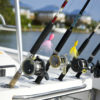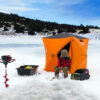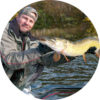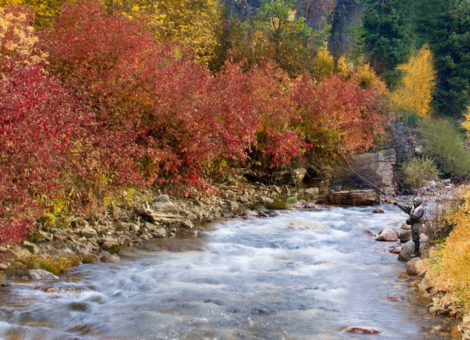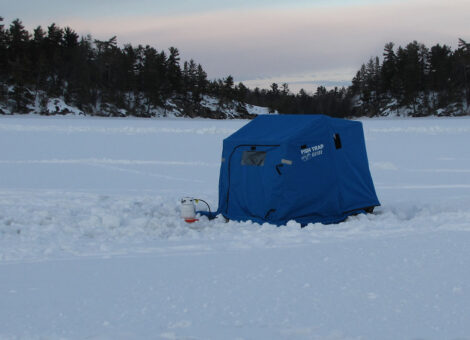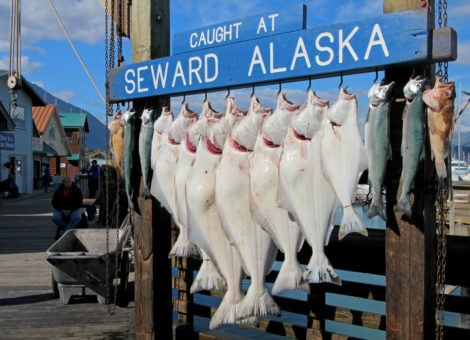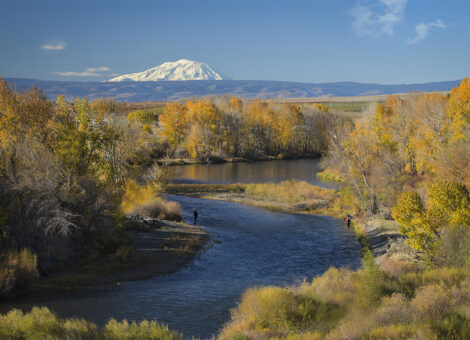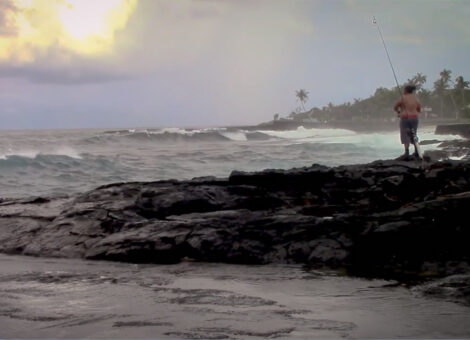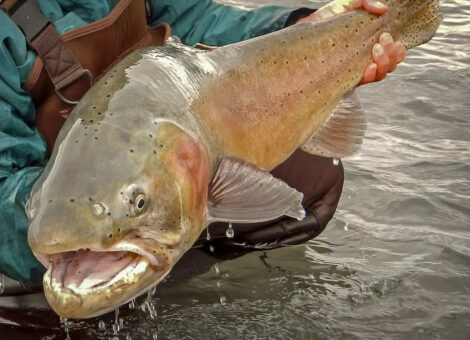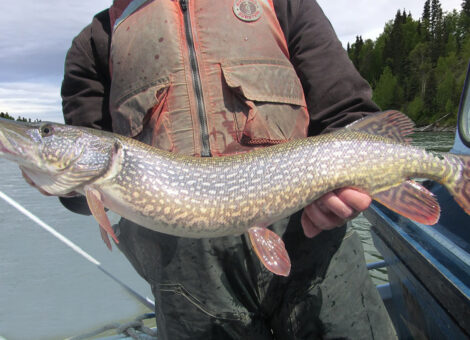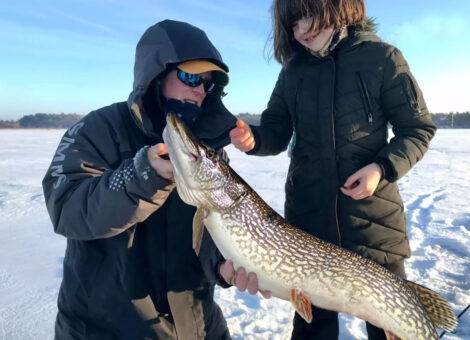Alaska is often referred to as the salmon capitol of the world—and with good reason. The waters of Alaska produce more salmon than any other place on the planet. For anglers who want to catch a prize salmon, there’s truly no better place than Alaska.
Alaska is home to all five types of pacific salmon: King (Chinook), Sockeye, Pink (Humpback), Coho (Silver) and Chum. Annual salmon runs occur between May and September, and you’ll need a permit to fish for salmon during this time. If you plan on targeting Kings, you’re required to purchase a special license.
Knowing when you can fish each species of salmon is key to having a successful fishing experience. King and Sockeye can be targeted anytime from June to late July. You’ll find Chum salmon through Alaska’s coastal waters from late June through the end of August, while Coho fishing is best from July through September. Pink salmon, the smallest salmon species, can be fished anytime from late July through the end of August. Review Alaska fishing seasons and run time charts to identify peak fishing availability and salmon runs.
Even though Alaska’s water team with salmon, thousands of anglers swarm to Alaska every year in search of a trophy salmon. If you’re looking to hook a big one, certain destinations should be at the top of your list. These include easily accessible seaside hot spots frequented by the masses as well as remote freshwater wilderness destinations few anglers ever see.
The following interactive map shows the top salmon fishing location throughout Alaska. To view more information about a location, click on the location marker.
- Kenai
- Kasilof River
- Homer Alaska
- Seward Alaska
- Whittier Alaska
- Prince William Sound
- Ketchikan
- Sitka
- Juneau
- Kodiak Island
- Brooks River
- Bristol Bay
- Nushagak River
- Alagnak River
- Russian River
- Moose River
- Willow Creek and Susitna River Confluence
- Ship Creek in Anchorage
- Bird Creek
- Gulkana River
- Copper River
- Indian Creek, Anchorage Bowl
- Wosnesenski River, Kenai Region
- Campbell Point Lake
- Valdez
Kenai River
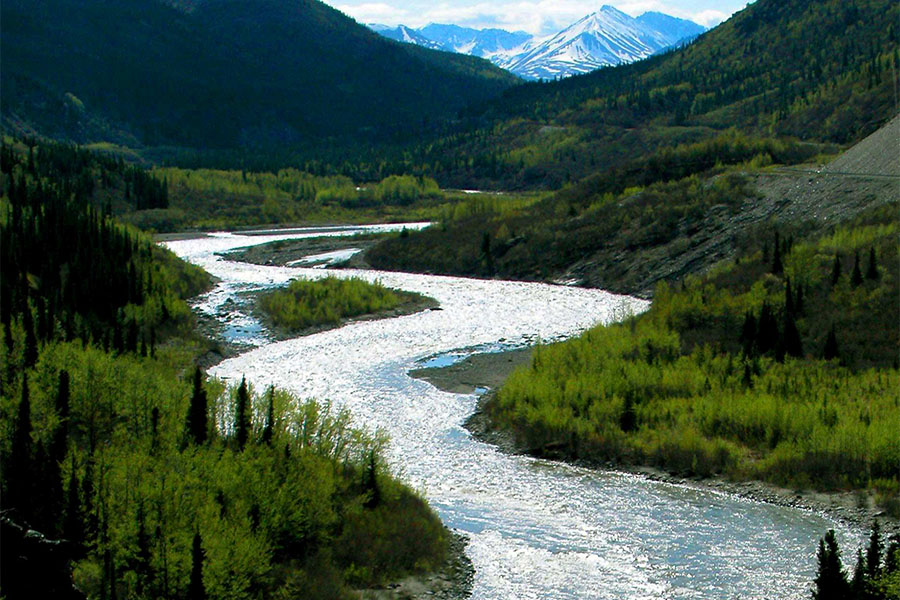
Though you’ll find all five species of Pacific salmon in the Kenai River it’s the outstanding Chinook and Sockeye runs that put Kenai on every angler’s map. From early Spring well into October you’ll find Coho, Chinook, and Pinkies by the thousands, and Sockeye can reach into the millions. If you’re looking for a trophy King, Kenai is the place to be.
Kenai river is just over 80 miles long and is a 2 and a half hour drive from Anchorage. Kenai is made up of three distinct section: Upper Kenai, Middle Kenai, and Lower Kenai. There are about 36 public access points along the Kenai river.
Upper Kenai River
The Upper Kenai River offers superb salmon fish. This upper section of the Kenai runs 18 miles from Cooper’s landing boat ramp to Skilak lake. A majority of anglers fish from shore but this stretch of the river can also be fished from drift boat. Angler who drift the river typically drift the 13 miles between Cooper’s landing and Jim’s landing boat launch.
Middle Kenai River
The Middle Kenai extends 20 miles west from Skilak Lake to Soldotna bridge. This section of the Kenai is often fished by drift boat. When the water level is high, angler can also fish this section of the Kenai using a motor boat—however, the first miles are not recommend for boats with motors. Whether you fish the Middel Kenai by drift boat or motor boat, you’ll want to be cautious of the Naptown rapids in Sterling. There are also plenty of spots to salmon fish from shore. As with other locations along the Kenai, the Middle Kenai offers some of the best salmon fishing on earth—especially for sockeye.
The Middle Kenai River is best to fish by boat in order to access the best salmon fishig spots. There are 7 accessible spots to fish the Middle Kenai River from shore. These include Bings Landing State Recreation Area near the boardwalk, Issic Walton State Park in Sterling, Morgans Landing on the boardwalk, Swiftwater Campground, Soldotna Creek Park along the boardwalk and Rotary Park in Soldotna along the 600 foot long board walk accessible via Funny River Road.
Lower Kenai River
The Lower Kenai River zigzags 20 miles west from Soldotna bridge to City Dock, Kenai boat launch just a stones throw from the ocean (Cook Inlet). This section of the Kenai can be fished by drift boat or motor boat. (Motor boats must be less than 50 horsepower.) While drift fishing is popular the water here is slow-moving and many anglers opt to anchor and fish from several spots. All salmon that enter the Kenai River pass through the lower section. It’s an excellent fishery.
Kasilof River
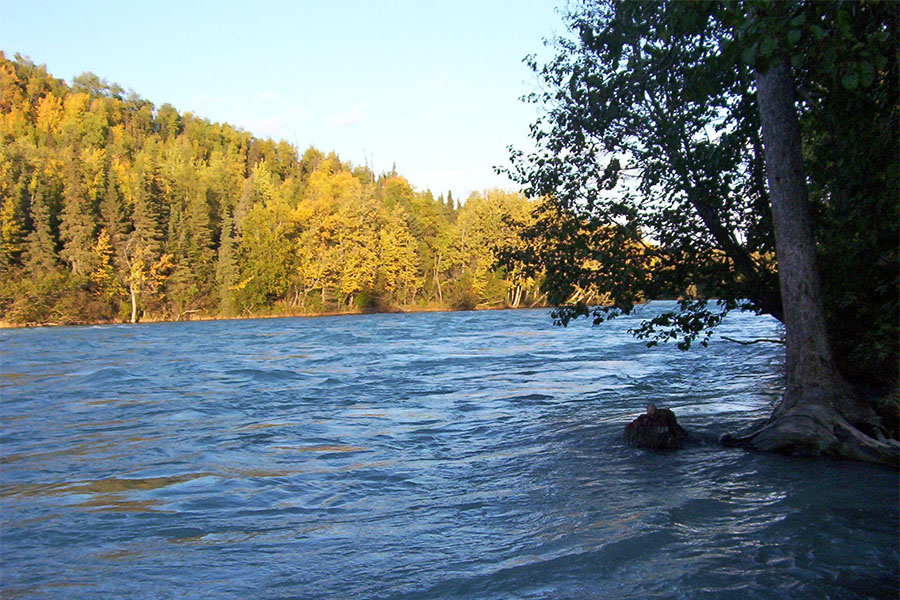
Homer Alaska
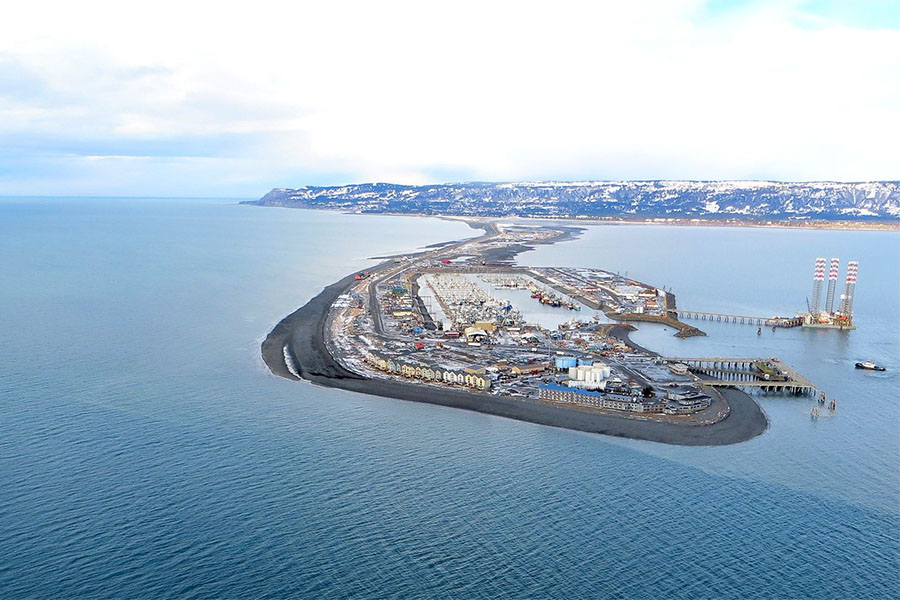
The top 5 shore-based spots for salmon fishing in Homer include Nick Dudiak Fishing Lagoon (Kings & Cohos), Mud Bay (Pinks & Cohos), End of Homer Spit (Cohos & Kings), Bridge Creek Reservoir, and Caribou Lake (few salmon).
Seward Alaska
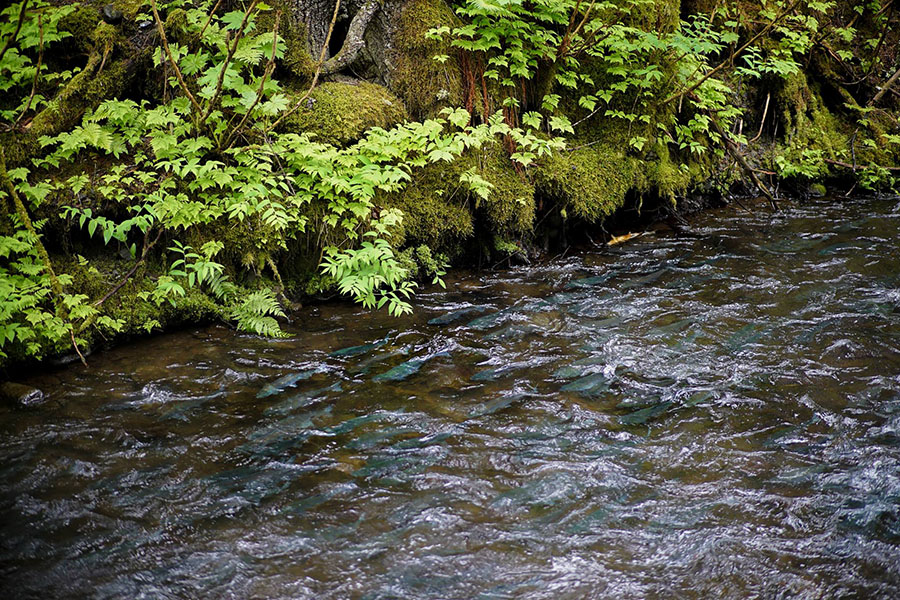
Fishing from boat is most common method to catch salmon in Seward, but shore fishing for salmon is also popular among the locals and visiting tourists. Popular shore-fishing spots include 4th of July beach, MacDonalds off Nash road as well as the bulkhead across the bay by 4th of July beach.
There are a myriad of excellent salmon fishing grounds in the waters off of Seward, Alaska. One of the most popular salmon fishing spots is Resurrection Bay. Other options include the coves surrounding Montague Island and the Northwestern Fjords. If you want something a little closer to Seward, fish Bear Creek—just outside of town.
Whittier Alaska
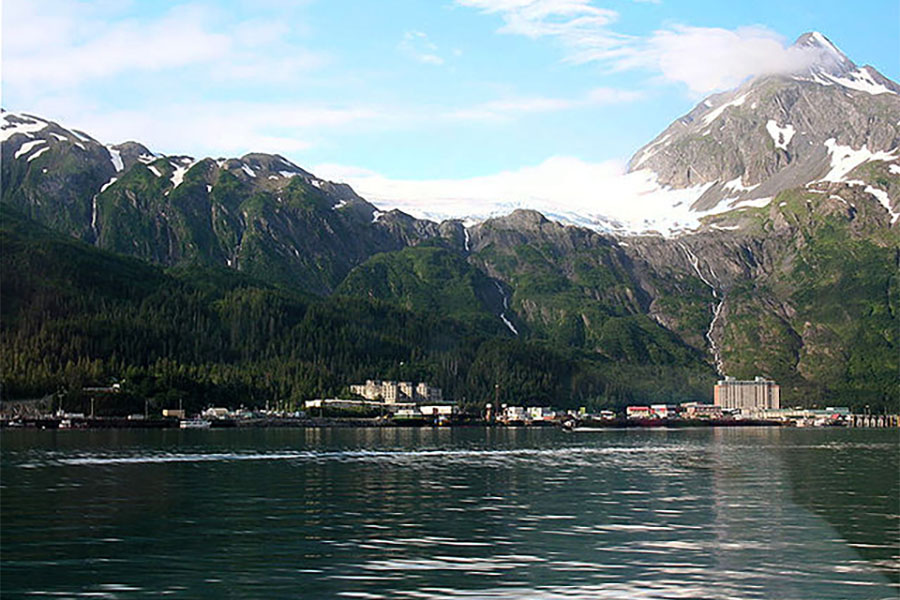
Like Seward and Homer, Whittier is just short drive from Anchorage. From the Whittier harbor anglers can access any number of salmon hotspots located throughout Prince William Sound by boat. The best time to fish for salmon on Prince William Sound is July through early August.
Prince William Sound
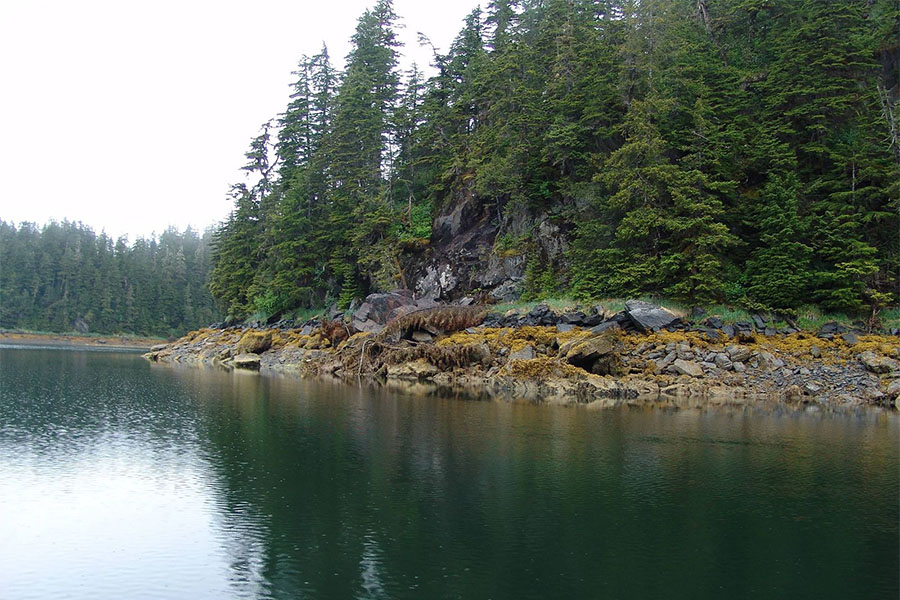
Prince William Sound offers both shore-based and boat-based fishing for all 5 species of Pacific salmon. Salmon can be fished from shore at Whittier Harbor, Head of Passage Canal and Smitty’s Cove. There are over 50 boat-based salmon fishing hot spots located throughout Prince William Sound.
Ketchikan

The typical method for salmon fishing in Ketchikan is saltwater trolling with either a baited hook, hoochies or any one of a variety of colored spoons.
Sitka
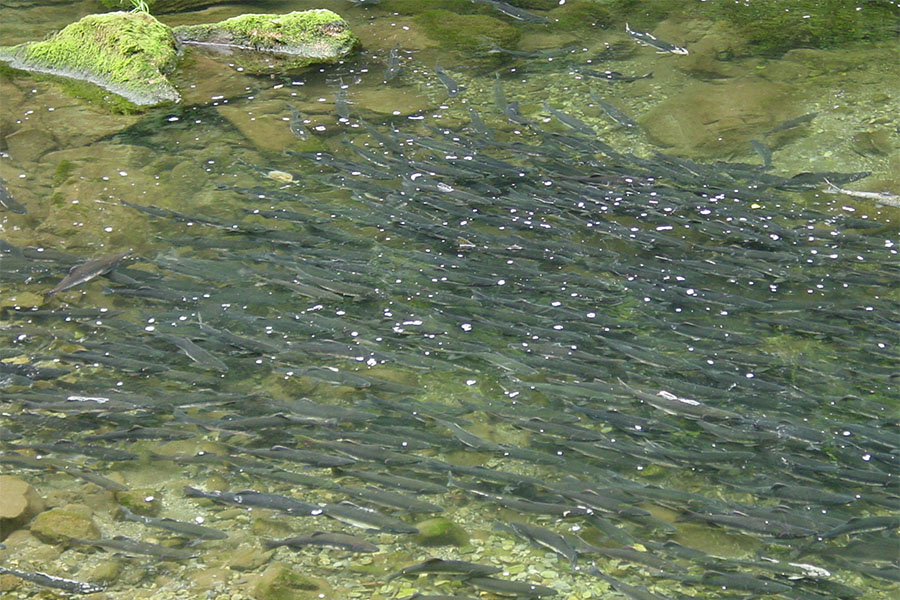
Juneau
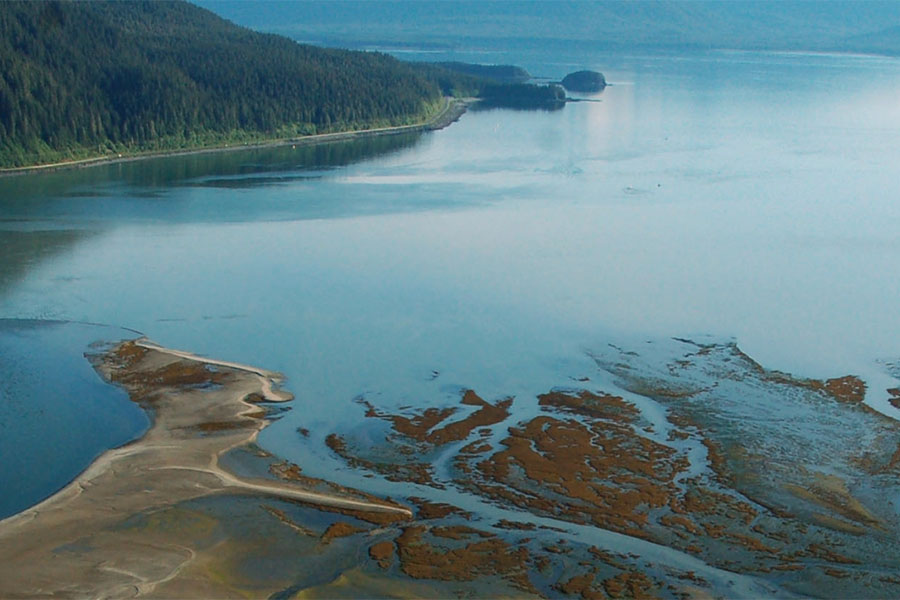
While fishing by boat in the channels, bays and coves surrounding Juneau is the most common method for catching salmon, shoreside angling for salmon is also effective. Hot spots for shoreside salmon fishing include Macaulay Hatchery (off the pier), Montana Creek (off Kaxdigoowu Drive), Ninemile, and Fish Creek—as well as the Mendenhall Wetlands. Fritz Cove and Lena Cover are two of the top spots to target salmon when fishing by boat on the open waters.
Kodiak Island
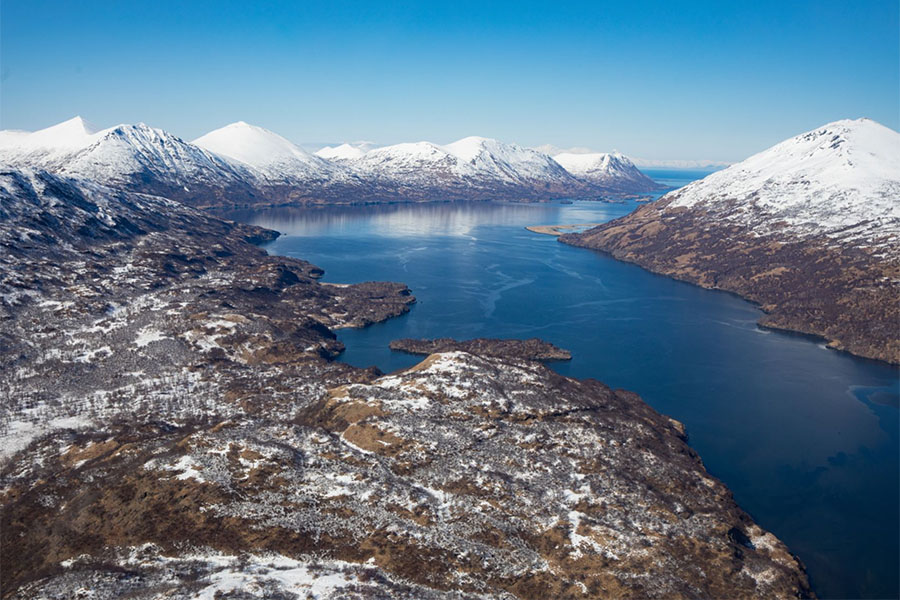
Kodiak Island is a bit remote, but there are daily flights that connect the Island with mainland Alaska. To it’s benefit, Kodiak Island has a well developed road system that make all the best salmon fishing spots accessible to anglers. Every summer the rivers on Kodiak Island support productive runs of King, Sockeye, Pink and Coho salmon—in that order.
Brooks River
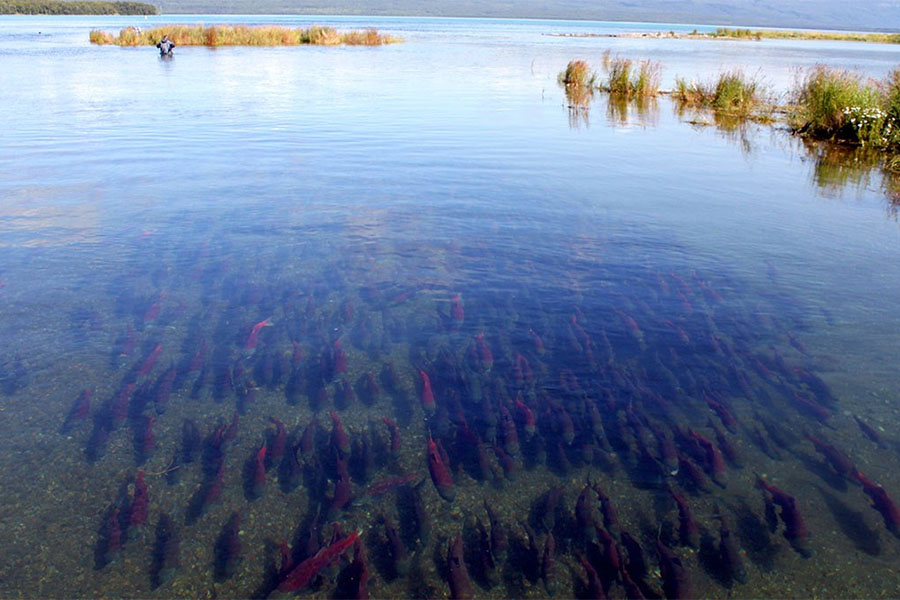
If you’re looking for a little adventure, Brooks River is the perfect spot to test your skills at fly fishing. And don’t forget the local population of brown bears. While there aren’t quite as many brown bears as salmon, Brooks River attracts one of largest gatherings of Alaskan Brown Bears anywhere in Alaska. A true testament to how good the fishing here is.
Brooks River is truly off the beatin path, but it’s well worth the trip for a once in a lifetime salmon fishing experience.
Bristol Bay
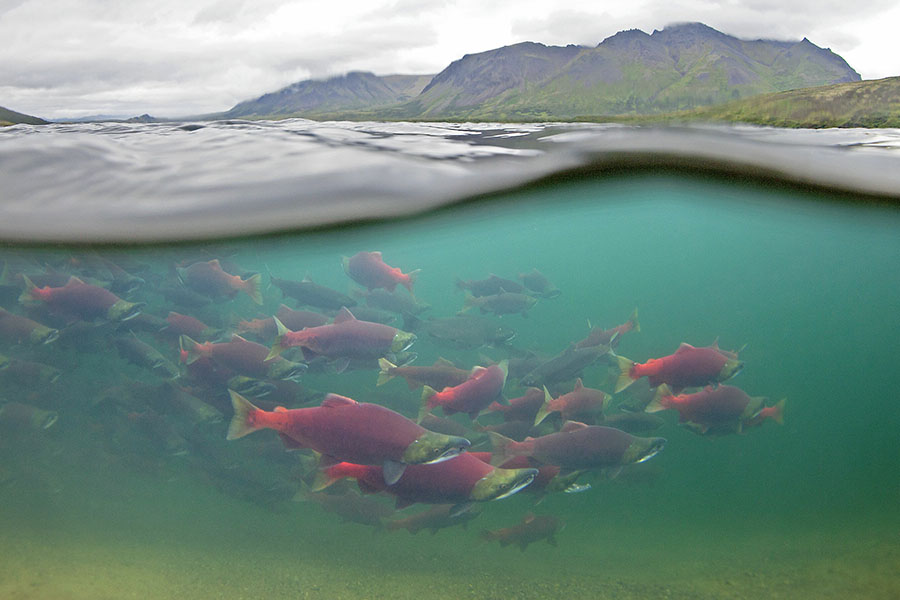
Bristol Bay encompasses more than 40,000 square miles and is almost the size of Ohio. There are hundreds of streams, rivers, and lakes that feed Bristol Bay year round. It is roughly 180 miles wide and 250 miles long. It’s truly hard to comprehend just how big Bristol Bay is. Due to its size and diversity, Bristol Bay offers anglers a variety of fishing opportunities. While Sockeye runs are the main draw to Bristol Bay, anglers can also fish for King, Coho, and Chum salmon.
Nushagak River
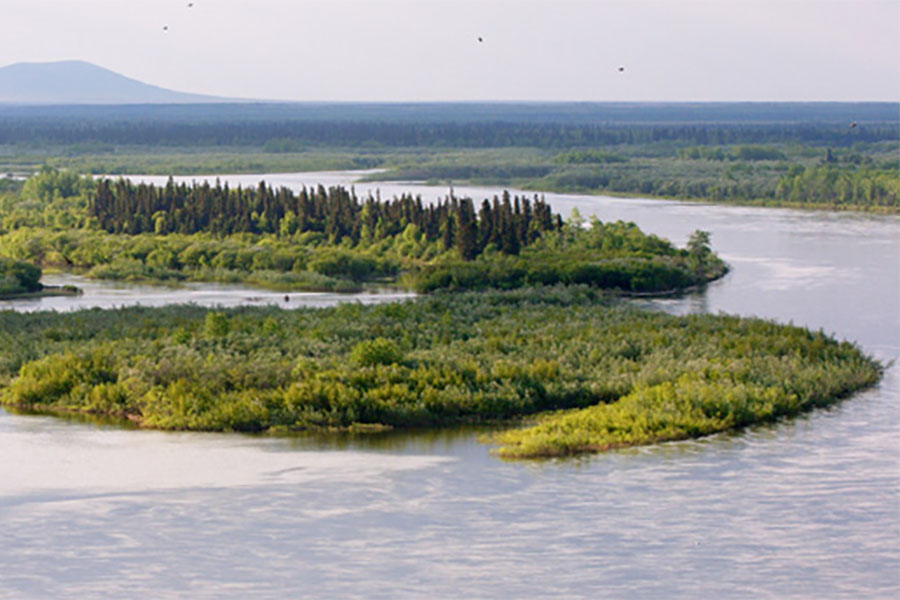
If you’re goal is to catch a trophy Alaska King salmon, Nushagak River is your destination. Local anglers report the Nushagak has some of the most productive runs of King, Chum and Sockeye salmon anywhere in Alaska, with fish populations reaching the tens of thousands—but the Nushagak is best known as a King salmon fisherman’s paradise.
Nushagak River, located in the heart of Bristol Bay, Alaska, runs nearly 280 miles from it source in the Alaskan Range to Nushagak Bay. The river is difficult to reach and accessible by floatplane. It’s wild, rugged, with not infrastructure and very low fishing pressure. Getting to and navigating the Nushagak is by no means a walk in the park, but it’s truly worth the trip for the avid angler.
Alagnak River
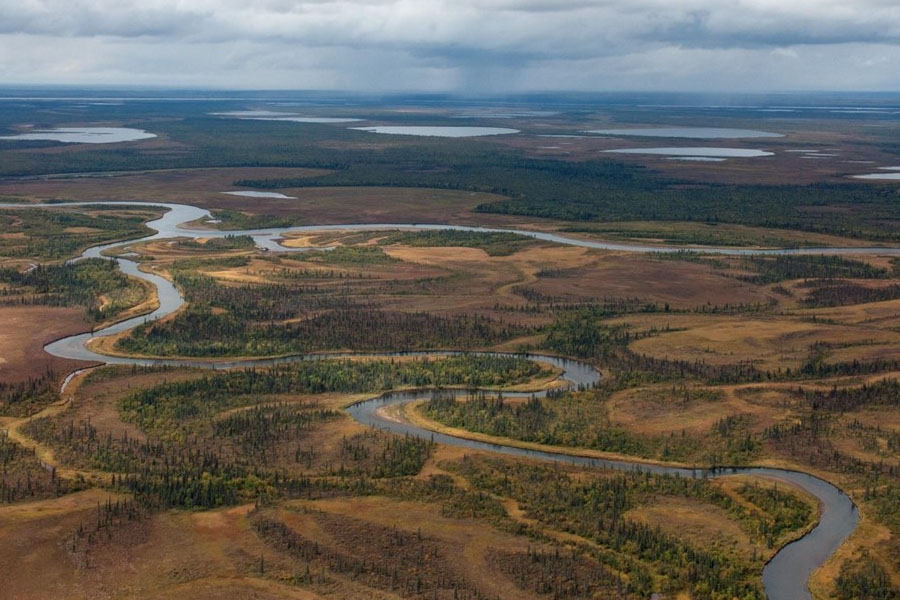
Compared to its western neighbor the Nushagak, the Alagnak river system is relatively small. An angler can fish the entire tidewater section of the Alagnak on single tide.
Fisherman report that the King salmon in the Alagnak River a bit larger than those found in the Nushagak. Where a 40 incher would be considered a big King on the Nushagak, big Kings on the Alagnak start at 50. But what’s gained in size is lost in numbers. There are fewer salmon overall on the Alagnak that on the Nushagak.
King salmon runs on the Alagnak River peak in mid-July and last just a couple weeks. The runs are strongest during the 2nd and 3rd weeks of July, and largest Kings usually make their way up the Alagnak River the tail end of the month.
Russian River
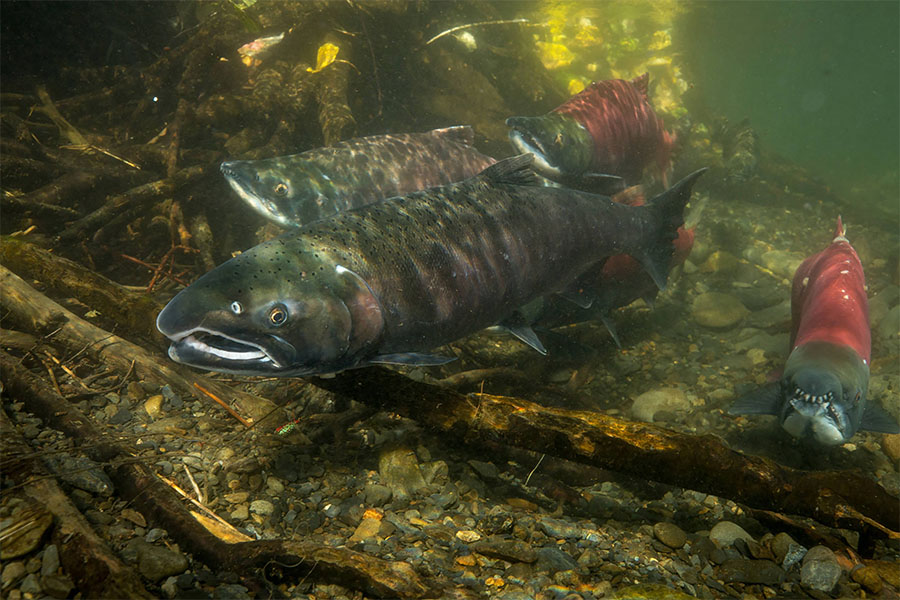
In the Russian River Anglers will find Sockeye, Coho, and an occassional Pinky. Anglers can also fish for Rainbow trout and Dolly Varden. From mid-June through early July expect a run of about 25,000 Sockeye salmon. From mid-July to early September a second, much larger run of roughly 80,000 Sockeye enter the river.
Moose River
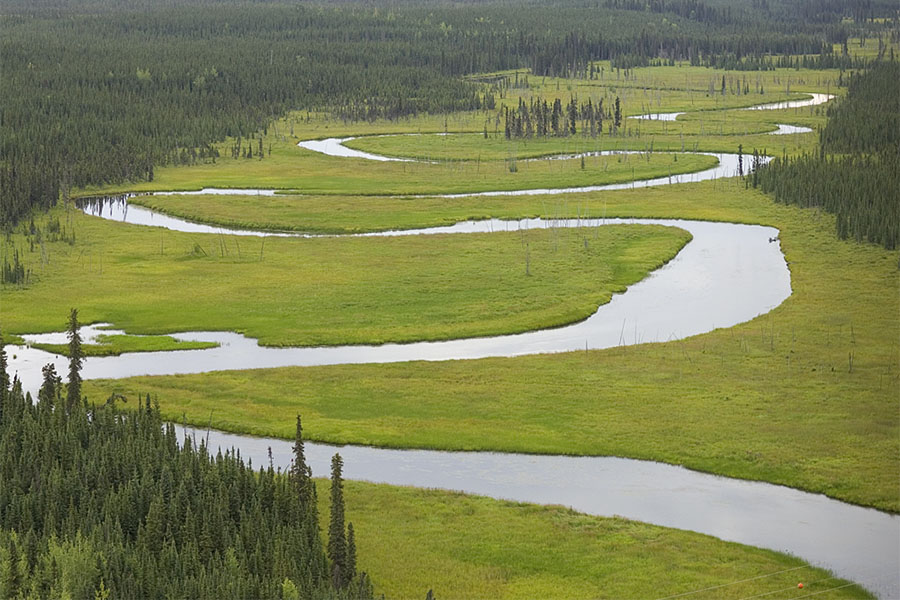
Willow Creek and Susitna River Confluence
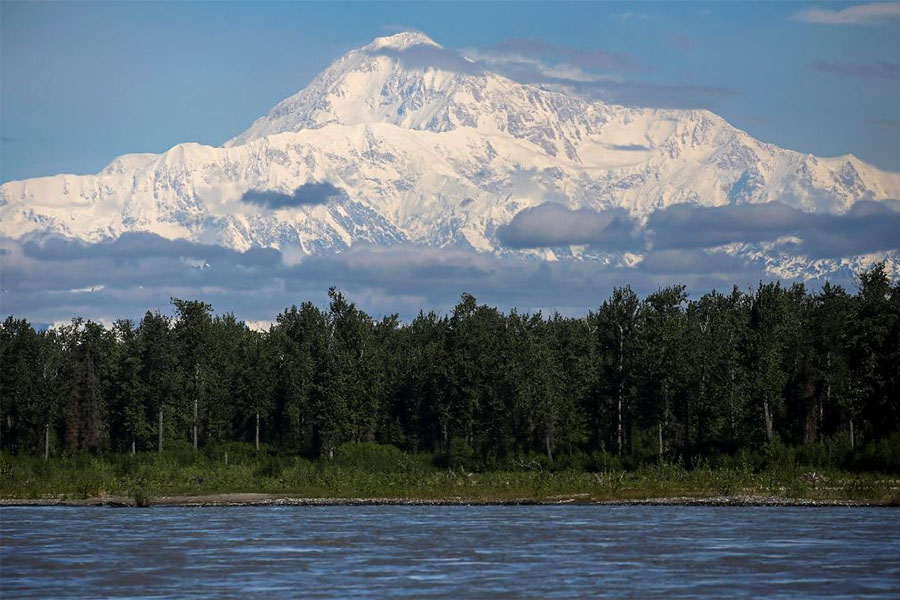
The confluence is a fishing hot spot for anglers interested in fishing King, Coho, Chum and Pink salmon. It also supports a healthy supply of Artic Grayling, Dolly Varden, and trophy size Rainbow trout. King and Coho are the most abundant salmon species in the confluence. King salmon runs arrives during late June and early July. Coho (Silvers) run from late July through mid-August.
Ship Creek in Anchorage
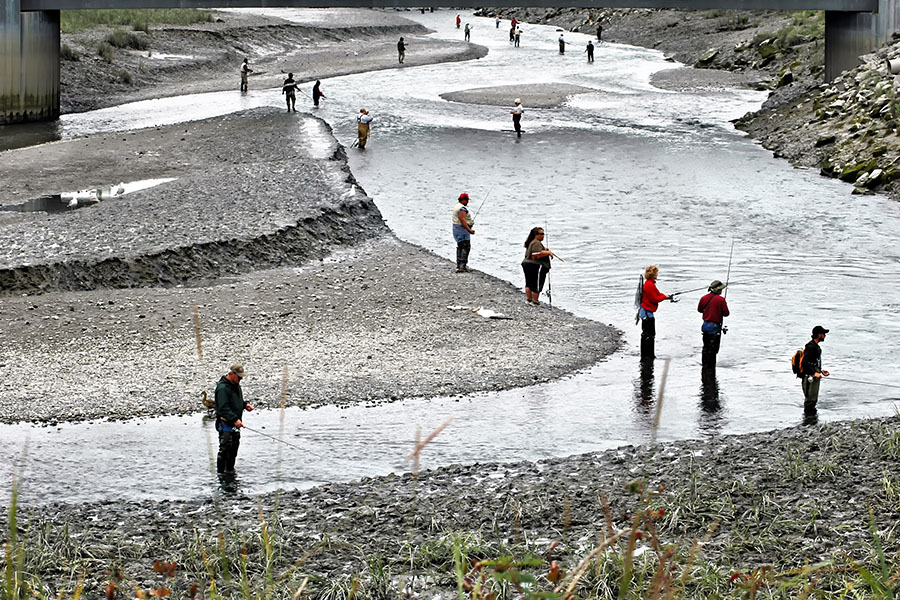
Ship Creek is best known for producing jumbo size King salmon. Each year King salmon hatchlings are released into Ship Creek where they make their way to the open ocean. When they return as adults 4 years later, anglers are permitted to catch a maximum of one King salmon per day and 3-5 Kings per year. Peak fishing season for Kings runs from mid-June through July. Peak fishing season for Coho salmon is mid-July through mid-August.
Bird Creek
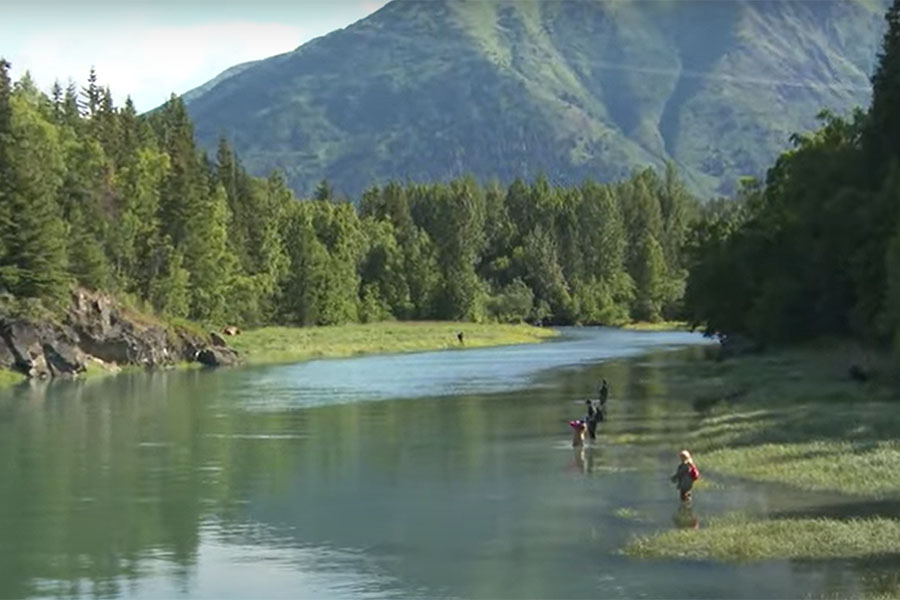
Bird Creek is located 27 miles south of Anchorage on the Seward Highway. Most of the year Bird Creek experiences relatively low fishing pressure compared to Alaska’s other salmon fisheries, except during Coho (Silver) salmon runs from July through September when it can get a bit crowded. There are 27 campsites, public restrooms, and running water. Most salmon fishing is done at the mouth of the creek and in tidal areas. Be careful when fishing tidal areas. It’s easy to get trapped in the muck and the tide rises fast.
Gulkana River
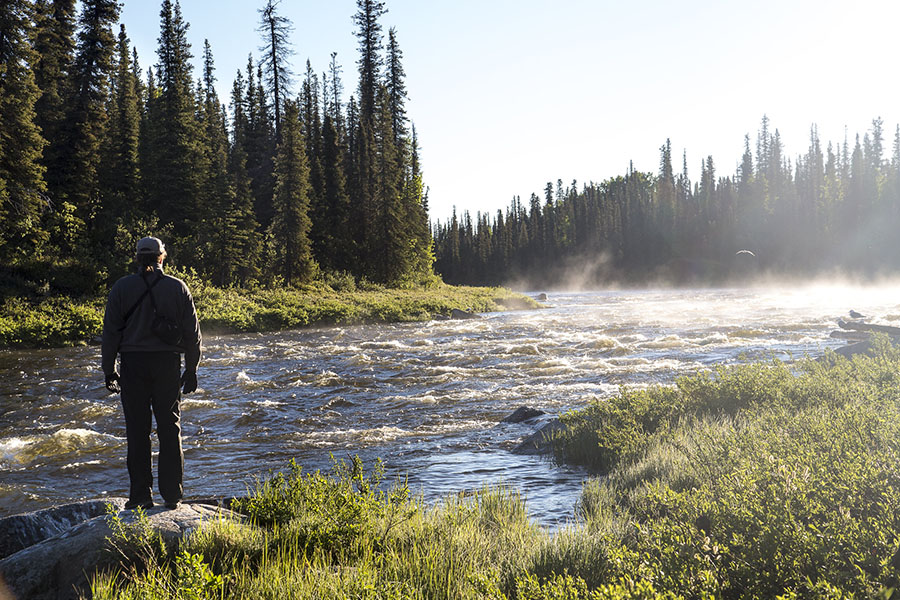
Sockeye salmon runs begin in late June and early July and continue through mid-August when they reach their peak. In early July, Sockeye congregate in large schools in the lower Gulkana as they prepare to head upstream to spawn. Sockeye are best fished with large streamer flies just of the shore. The best fishing for Sockeye occurs during late August and early September along the shore and mouth of Gunn Creek in Summit Lake.
Gulkana River runs parallel to Richardson Highway (Highway 4). Lodging and access points are found in Glennallen, Gakona, Paxson and Summit Lakes.
Copper River
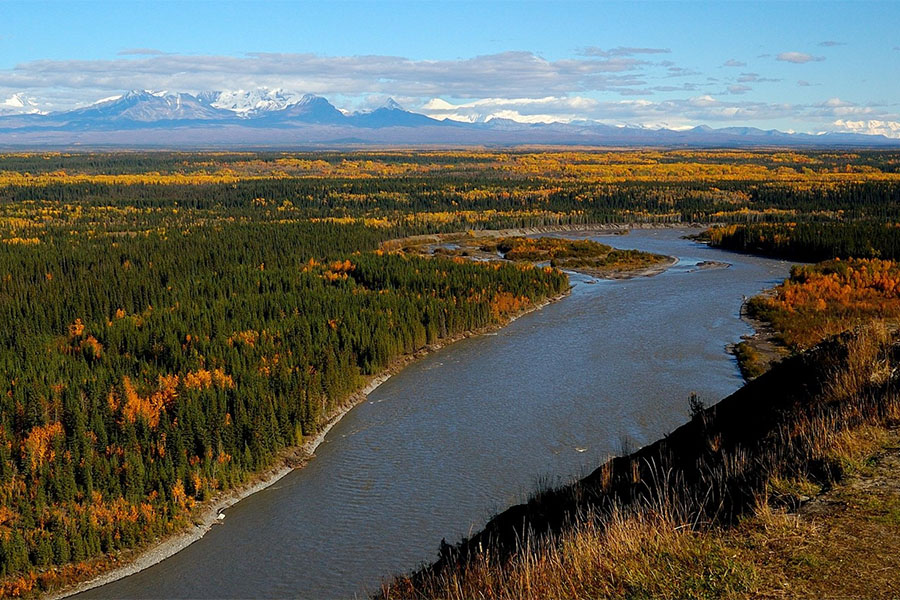
During the peak Sockeye fishing season in July and August its common for most anglers to come away with their limite of Sockeye. However, on the Copper River Sockeye anglers are able to get an early start on the fishing season. Sockeye runs begin in the Copper River in mid to late May, much earlier than other regions of Alaska where the Sockeye don’t start running until mid to late June.
Indian Creek, Anchorage Bowl
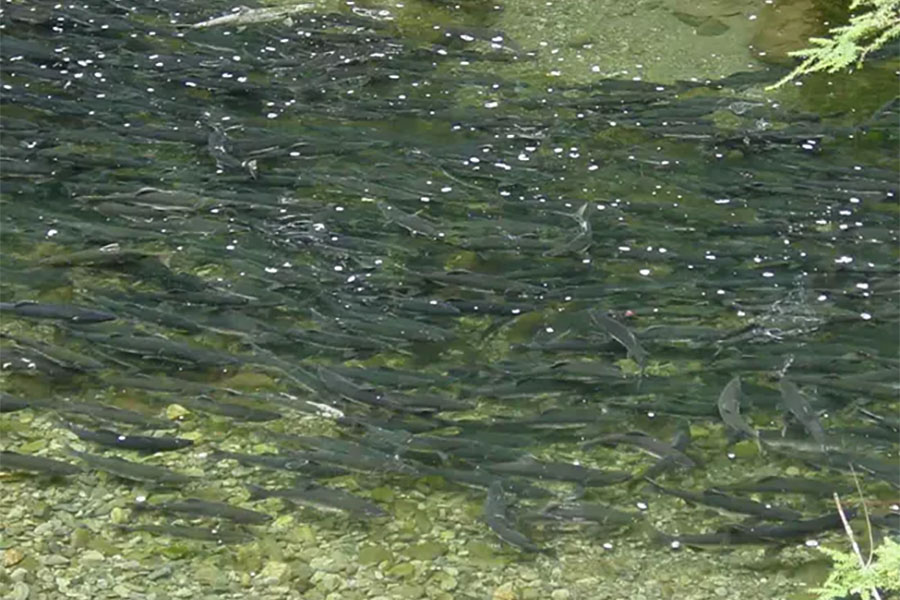
Pinks begin arriving in mid-July and by August there are masses of salmon stacked one atop another. Upstream from the highway bridge spectators can observe pools of water overflowing with beautiful Pinks. Indian Creek, Anchorage Bowl is one of the easiest places in Alaska to view spawning salmon. There is easy access to the river from the Indian Creek rest area. During peak salmon season fishing pressure is high, so arrive early to reserve a spot.
Wosnesenski River, Kenai Peninsula Region
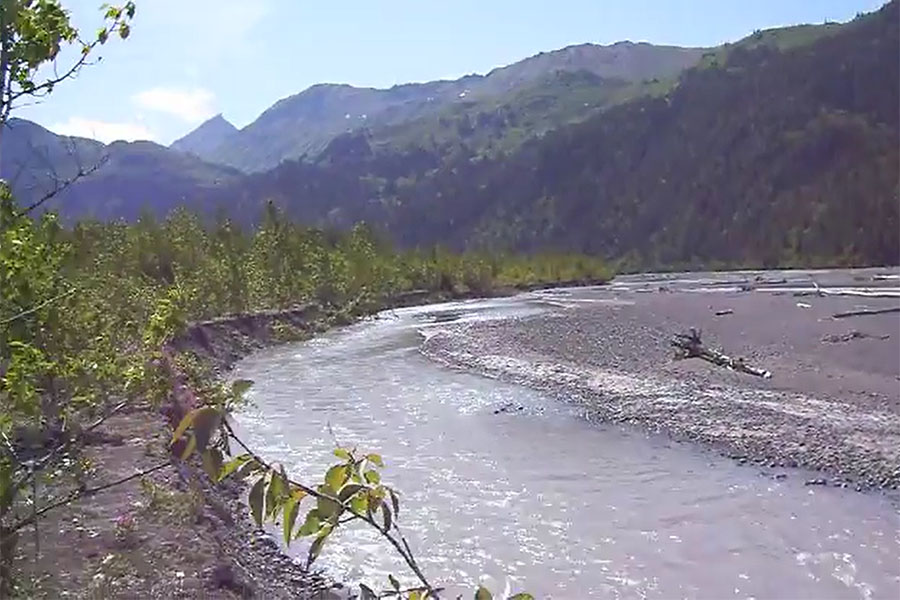
If you’re interested in planning a fishing trip to Wosnesenki River, I recommend contacting an experienced guide to learn more about the area and opportunities.
Campbell Point Lake
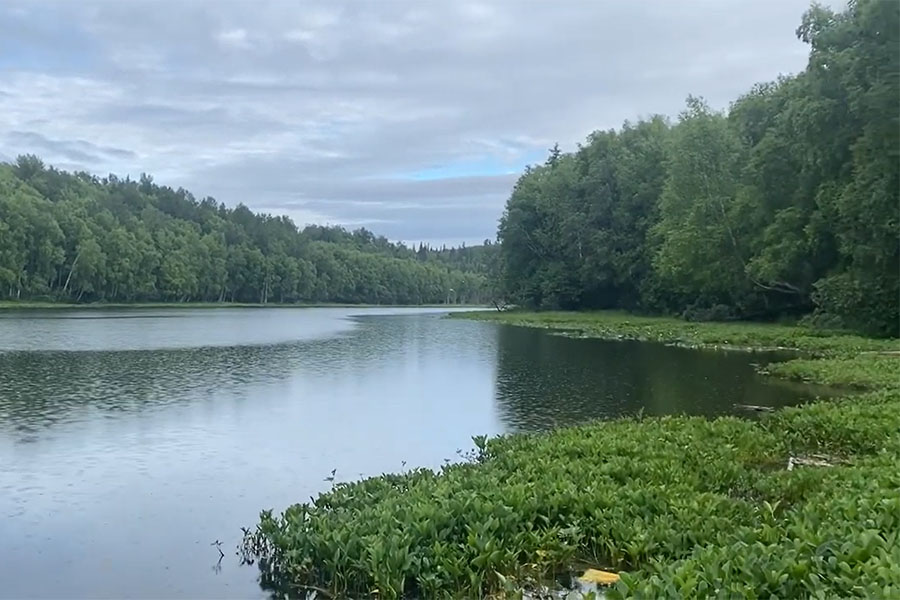
Salmon in Campbell Point Lake feed aggressively all winter and are relatively easy to catch by suspending a small baited jig between 5 and 10 feet below a bobber in the water. Move the jig up and down and you’re sure to get a bite. For bait, use use shrimp, salmon eggs or clams. Fishing Campbell Point Lake during the winter for salmon offers an excellent fishing experience for young kids and the entire family.
Valdez
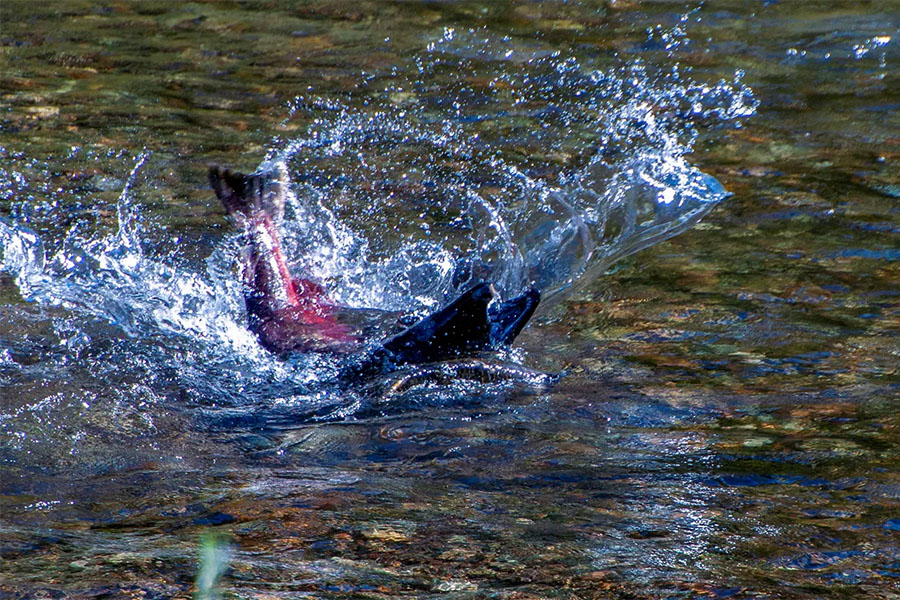
The Valdez region offers a variety of fishing opportunities for all species of Pacific salmon, incuding Kings, Coho, Pinks, Sockeye and Chums. Salmon fishing can be done from shore or at a few freshwater lakes and rivers in the Valdez area, but I highly recommend renting a boat or booking a charter so you can fish the open water. You will greatly improve your odds of landing a nice size King or Coho salmon fishing from boat in the waters off Port Valdez and Prince William Sound.
Again, I recommend fishing Port Valdez and them moving into Prince William Sound. However, if you want to fish from shore or inland the following locations are your best bet for productive salmon fisheries.
Robe River
The Robe is one of the few freshwater rivers in Valdez that offers descent salmon fishing. On the Robe River you’ll find abundant numbers of Pink salmon followed by Coho salmon later in the season, Chum and Sockeye. The best section of the Robe for salmon fishing is the Robe River flyfishing area below the confluence of the Robe and Lowe rivers.
Old Town Valdez
Old Town Valdez is one of the best places to shore fish for salmon. Here there are casting opportunities for all five species of Pacific salmon. Old Town Valdez is access via the dirt road west at Mile Post 0 on Richardson Highway.
Soloman Gulch Creek
Soloman Gulch Creek offers fishing for Pink and Coho salmon. Pinks are most abundant and are best fished during the months of July and August. Use extreme caution when fishing Soloman Gulch. This area is full of brown and black bears. The creek is accessed at Mile Post 2.6 on Richardson Highway, along Dayville Road.
Allison Point
You’ll find all five species of Pacfic salmon at Allison Point. This location offers shore-based fishing for salmon. Anual Pink salmon bring most anglers to fish Allison Point. Access is at Mile Post 2.6 on Richardson Highway, along Dayville Road to Allison Point.
Breakwater Beach
Another superb shore-based salmon fishery located in the city of Valdez. Here you’ll find all five species of Pacific salmon. Give its easy access to local residents and visitors, fishing pressure is typically high.
Shoup Bay
Offers excellent fishing opportunities or all five species of pacific salmon, if you can reach it. Shoup Bay is accessible only via a challenging hike through a somewhat rugged area. The salmon fishing is good, but you’ll need to be in shape to reach the water here. Hike west about 6 miles on the Shoup Bay Trail to Shoup Bay.


